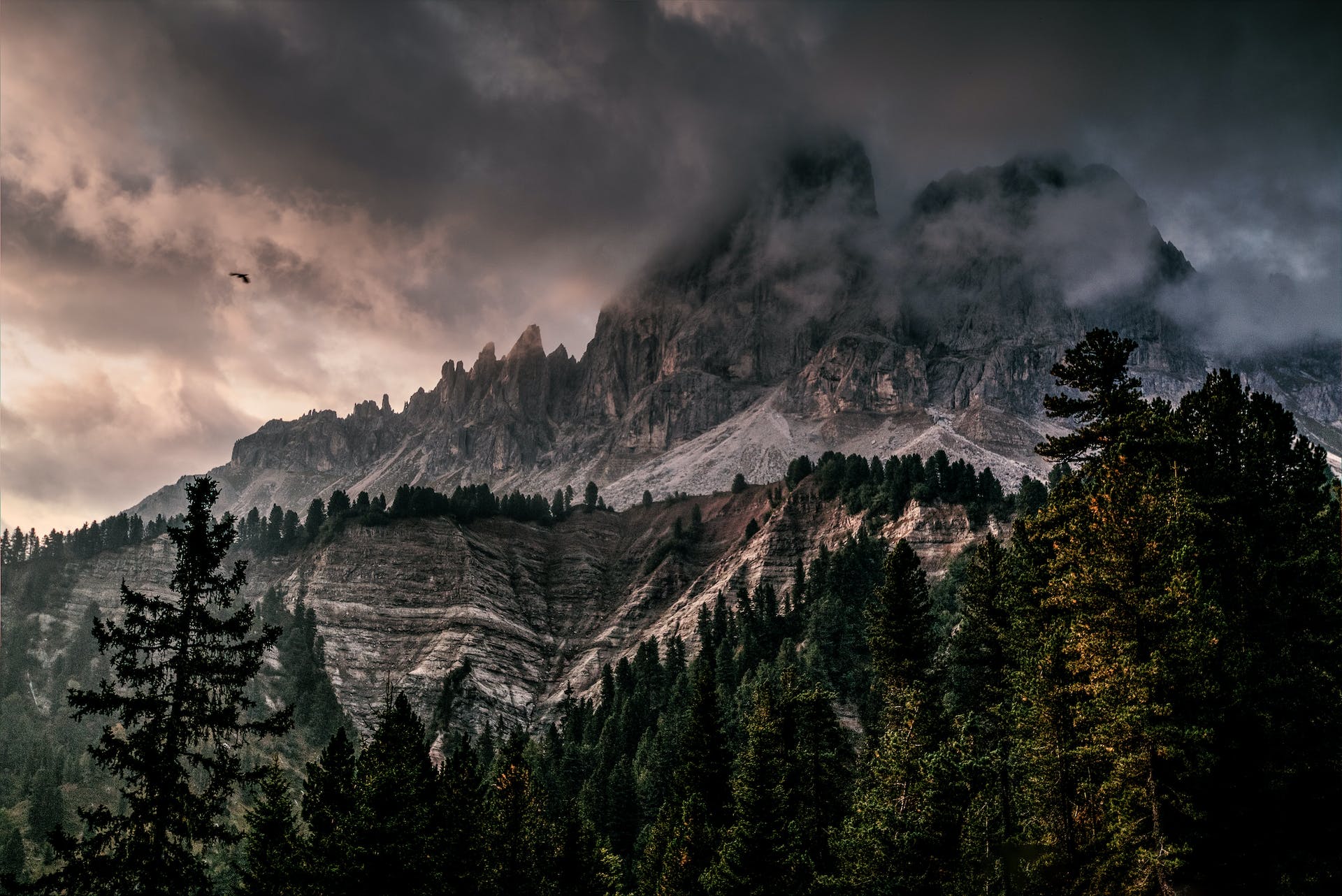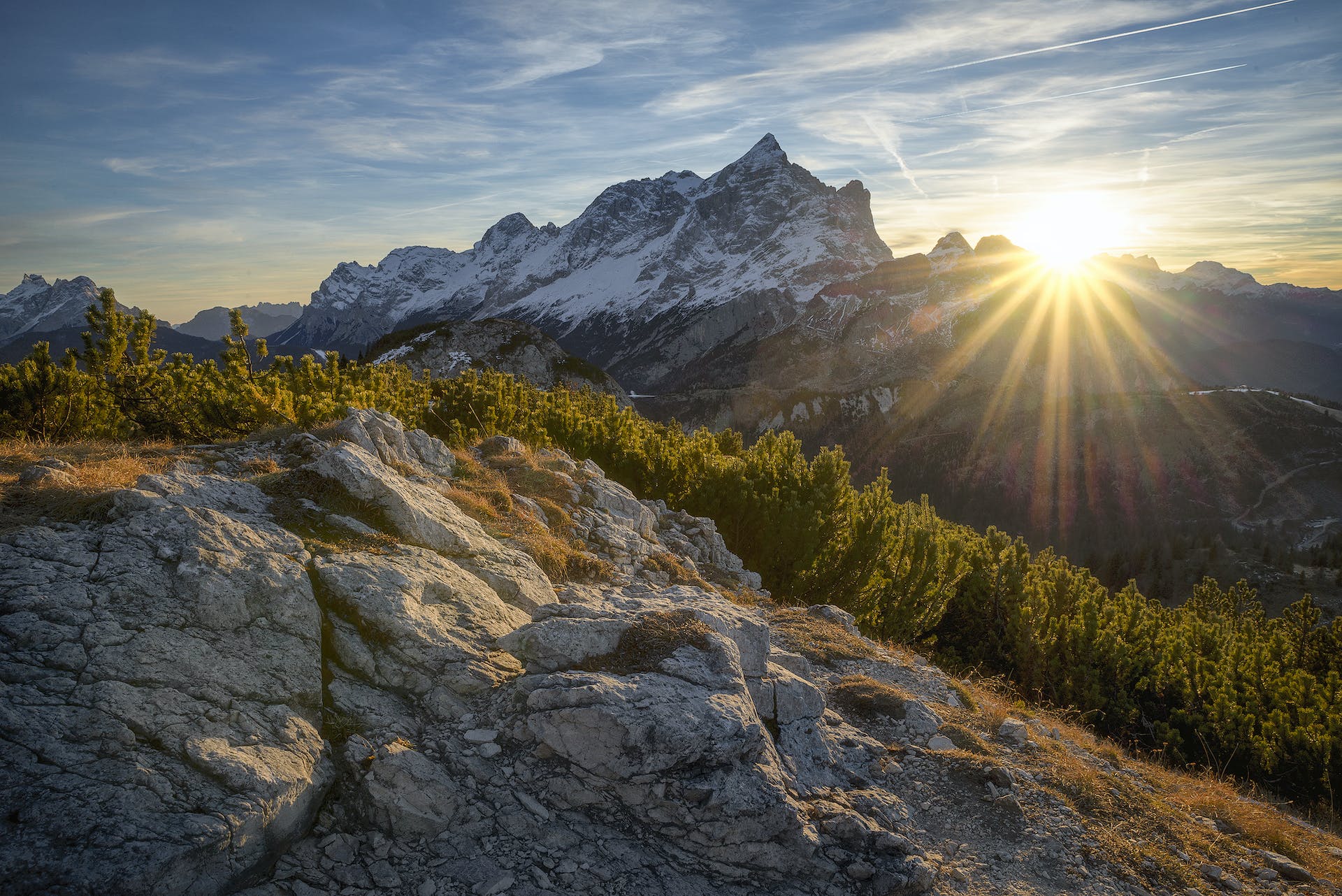Introduction to Highest Mountain in Africa:
We are going to discuss the highest Mountain in Africa. One of the highest mountain in Africa the great continent, Kilimanjaro also known as “Roof” of Africa is found in East Africa. This natural miracle can be perceived as a representative of the breathtaking beauty and geological phenomena that characterize Africa. This complete investigation ranges from the high peaks of Kilimanjaro to basically how diverse ecosystems can decorate its slopes.
- Kilimanjaro’s Towering Summit: Highest Mountain in Africa
19,341 feet Kilimanjaro’s Uhuru Peak stands as the highest Mountain in Africa. Standing there, on top of this gorgeous peak part of the Kilimanjaro massif; a great number of adventurers as well those who adore nature are welcomed with its amazing panoramic beauty which can even be seen over Tanzanian plains. Many Climbers try to Climb on the Highest Mountain in Africa but every human is not capable of doing this.
- Geological Origins: Kilimanjaro Formation Mysteries
The geological history of Kilimanjaro is just as impressive and dramatic as it is imposing. Kilimanjaro is a stratovolcano that consists of three volcanic cones Kibo, Mawenzi and Shira created by several eruptions. This mountain is seen as a geological wonder by many scientific people because of the uniquenesses that come with its volcanic activity and glacial processes.
- Climbing Kilimanjaro: One Unforgettable Climb to the Summit.
Many people’s dream to climb the highest mountain in Africa the Kilimanjaro. One can take a variety of routes up the climb, each posing its own challenges that go with some stunning views. 2 of kilimanjaro’s most famous routes the Machame Route and Marangu route invite climbers to enjoy Kilimanjaro’s awe-striking landscapes as they traverse their way Uhuru Peak.
- Ecological Diversity: Unique Habitats and the Marvelous World of Kilimanjaro’s
Kilimanjaro’s slopes show an array of ecosystems ranging from the lush rainforests to the alpine meadows and barren volcanic landscapes. The mountain is a habitat for an incredible variety of plant and animal life, many of these are native species who have developed ways to survive in the harsh environment. As climbers climb, they journey through these ecological zones one by one, being able to see the incredible diversity that characterizes Kilimanjaro.
- Threats to Kilimanjaro’s Glaciers: The Role of Climate Change on Africa’s Famous Peak
At one time, Kilimanjaro’s iconic glaciers were synonymous with mount identity. But these have been melting over the years. These glaciers are affected by climate change, and scientists readily monitor their recession. To retain Kilimanjaro’s distinctive features and ensure its sustainability in the future generations, it is vital for people to understand what impact such an environmental change will have.
- Cultural Significance: Kilimanjaro in Local Myths and Worldwide Fame
Apart from its geological and ecological importance, Kilimanjaro has a special significance in Tanzanian local culture. The mountain is revered by the Chagga people and it is part of their traditions and folklore. In addition, Kilimanjaro has become globally known as a symbol of natural beauty in Africa attracting tourists far and wide who just want to witness the grandeur of this place thereby contributing to its preservation.
- Planning Your Kilimanjaro Adventure: Practical Tips for Summit Success
Planning is the key for those who want to climb Kilimanjaro. A successful climb demands planning from choosing the right trekking path to acclimatization plans and necessary equipment. This chapter has a range of tips and advice to assist aspiring climbers in preparing for the ultimate task – scaling Africa’s highest peak.
Mount Kenya: Africa’s Enigmatic Crown Jewel
Mount Kenya, a massive stratovolcano in central Kenya and highest mountain of the country and 2nd highest mountain in Africa. Standing at the imposing height of 17,057 feet (5,199 meters), this towering giant is a paradise for an adventurer. Mount Kenya offers a wide variety of ecosystems ranging from rich rainforests to glaciers which serve as an impressive setting for climbers. Such as the scenic Sirimon and technical Nelion peak’s challenging climbing routes attract a great number of mountaineers looking for both adventure and natural beauty. From its gorgeous landscapes to rare biodiversity, Mount Kenya is an epitome of Africa’s diverse and magical topography.
Ras Dashen: Ethiopia’s Alpine Majesty
Ras Dashen is the highest peak of Ethiopia and third Highest mountain in Africa; it can be found within Simien Mountains. 14,928 feet (4,550 meters) above sea level , Ras Dashen provides a distinct and tough climb. Stark surface and dramatic cliffs offer an exciting climb for those who are interested in being both adventurous and culturally-minded. Ras Dashen is not only a mountain but part of the Simien Mountains National Park, which comprises UNESCO World Heritage Site where there are numerous protected wildlife and ancient rock-hewn churches. It is not merely a physical journey to climb Ras Dashen but also an exploration of the cultural and historical aspects associated with Ethiopia’s high-altitude wonders.

In the world of high mountains, Kilimanjaro is a landmark of natural splendor, geographical wonders, and cultural symbol. From its towering height to the detailed ecosystems that are present on its slopes, Kilimanjaro’s enchanting mystique entices both adventurers and researchers. As we unveil the faces of this majestic mountain, it becomes clear that Kilimanjaro is not just Africa’s tallest peak; it is a symbol of nature’s incomparable wonders and invites all who dare to hike its heights to embark on an adventure they will never forget. Richard Gustavovich Reusch climb highest mountain of Africe most of the time than other.
Safety Tips For climbing Mountains
1.Thorough Planning:
A safe mountain climb relies on meticulous planning. Before climbing your mountain, research the unique challenges of this particular mountain, weather patterns specific to this mountain, and any pertinent regulations. Plan a complete itinerary, taking into account adaptation pauses, rest stops and escape routes in case of emergencies.
- Adequate Gear:
Make sure all the equipment right from climbing ropes to clothing is in excellent condition. Weather-appropriate clothing comes first and always have necessary safety equipment, such as a first aid kit, navigation tools, and communication devices.
- Physical Fitness and Altitude Acclimatization:
Peak physical fitness is essential for a successful mountain climb. Start with cardiovascular and strength training to improve endurance and stamina. Further, plan to include moderate climbs in your schedule as you try and adapt to the higher altitudes so that effects of altitude sickness are minimized.
- Team Communication:
Good communication within the climbing team is a must. Set standards and procedures for different situations such as emergencies. Create an environment where climbers feel able to express concerns or problems with the team. Regular meetings with team members help ensure safer climbing.
- Weather Awareness:
Mountains are famous for their unpredictable weather patterns. Keep yourself updated on the weather forecast and be ready for sudden changes. They also avoid climbing in severe weather and always prepare contingency plans to handle the unexpected change of weather to avert dangerous climbs.
- Emergency Preparedness:
Familiarize yourself with basic first aid skills and stock up on a complete medical kit. Familiarize yourself with emergency procedures and evacuation routes to act promptly during unforeseen situations.

Also Check the website for more content : NRUTimes
7 Best Climbers in Africa
An entirely unique group of people has emerged as stars in the world of mountain climbing venturing into Africa’s breathtaking sceneries. These pioneers – lauded for their mountaineering successes – conquered some of the continent’s tallest mountains as well becoming trendsetters, paving a path for another generation of climbers. Let us see the lives of those iconic for climbing Africa’s peaks.
- Sibusiso Vilane: The South African Trailblazer
Sibusiso Vilane is a pioneer in African mountaineering hailing from South Africa. Vilane is known to be the first Black African who climbed the summit of Mount Everest. Further exploits, which demonstrate an outstanding skill and determination in high-altitude climbing, include hiking across each of the Seven Summits .
- Tumi Mphahlele: Breaking Barriers in Female Climbing
Tumi Mphahlele is an experienced South African mountain climber who has broken multi-gendered boundaries in the world of climbing. She is the first Black African woman to climb Mount Everest and became a role model for all female climbers in Africa, showing that resilience and dedication are aspects that transcend gender.
- Mohammed Ahkim: Morocco’s Alpine Maestro
Mohammed Ahkim is one of the greatest names in African mountaineering, he comes from Morocco. He is a highly accomplished alpinist who has climbed the most difficult peaks in North Africa’s Atlas Mountains demonstrating his mastery of navigating rough terrains.
- Angela Vorobeva: Kenya’s High-Altitude Specialist
Angela Vorobeva, a famous Kenyan mountaineer, has become one of the leaders in high-altitude mountain climbing. As a guide and expedition leader, she has led numerous successful ascents across different African peaks like Mount Kenya and Mount Kilimanjaro where mountaineering is steadily rising in popularity within the East African region.
- Nadir Dendoune: Conquering the Seven Summits
Algerian-French mountaineer Nadir Dendoune has become a hero for conquering the Seven Summits including Africa’s highest peak, Mount Kilimanjaro. His travels represent persistence and commitment, motivating climbers throughout the continent to challenge themselves and seek out global summits. He can Climb the Highest mountain in Africa.
- Saray Khumalo: 1 The First Black African Woman to Climb Everest
Saray Khumalo, a proud South African woman, has engraved her name in the annals of history as the first Black African female to climb Mount Everest. This accomplishment does not just reflect her individual skill but also signifies the growing diversity in global mountaineering society. She also climb to highest mountain in Africa in 2012.
These are the eminent mountaineering heroes from various parts of Africa symbolizing the spirit of adventure, endurance, and success. Through their amazing accomplishments, they not only climbed peaks but also opened a new generation of climbers and put a love for climbing in the hearts of many across the continent. As their stories evolve, they keep on motivating those would-be adventurers to dream huge and strive for the peak. These People are capable of climbing the highest mountain in Africa. Many already Climbed the highest mountain in Africa
How to Become a mountain Climber
A career as a mountain climber is an exciting and challenging venture that should be approached from an all encompassing approach. Body fitness levels or your physical abilities and the technical prowess you have to climb mountains are factors of paramount importance in this profession.
- Physical Fitness for the Summit
Before conquering high mountains, make sure to have a strong physical basis first. Engage in a holistic fitness regimen that includes cardiovascular activities, strength training and endurance workouts. Activities that simulate the needs of mountain climbing such as hiking and trail running are particularly good, preparing your body for future endeavors.
- Mastering Basic Climbing Techniques
Learning the basics of necessary mountain climbing techniques is essential for dealing with wildly different and sometimes problematic terrains typical to highland regions. Consider taking climbing courses where you will be guided by professional instructors or entrust yourself to wise mentors. Learn important techniques like rope work, belaying and rock climbing skills to guarantee safety and competence during climbs.
- A Day in Nature’s Classroom
Implement your skills from theory to practice by learning in the field. Start with local trails and move gradually to more challenging terrains. Study the different types of terrain, weather conditions and elevation changes so that you become confident in your ability to learn quickly. Practical experience increases your ability to make well-informed decisions and cope with the uncertainty that nature can present.
- Engaging with Climbing Communities for Assistance
An essential step on your journey is joining local climbing communities or clubs. These groups surround climbers with other experienced people who can offer useful advice, insights and encouragement. Connect to seasoned mountaineers and share your experiences by joining groups for group climbs or participating in climbing events.
- Equipping Yourself with Quality Gear
The best gear should be purchased for an enjoyable and safe climbing. Make sure you have a good harness, solid shoes, proper clothes and other necessary gear. Quality equipment not only improves safety but also act as comfort and efficiency during the ascends. Ask experienced climbers or gear experts to guide you in selecting the right equipment for your goals.
How to make Climbing a hobby
Becoming a mountain climber is the process that mandates devotion, unceasing learning and also safety. By referring to this comprehensive guide, you’ll establish a strong foundation for an exciting and rewarding trip into the mountains. If you Love to climb then you can Climb the highest mountain of Africa or the highest mountain of the world
Mountain climbing is a great hobby that means physical activity, adventure and friendship with nature in one. This below is a comprehensive guide to change mountain climbing into a rewarding and lifelong hobby.
- Start with Local Trails:
Start your hobby of mountain climbing by taking local trails and viewing spots. Many places provide convenient and easy to access trails, where anyone can enjoy climbing without having to go into harsh terrains. As you become more proficient and confident, gradually increase the difficulty level.
- Join Hiking or Climbing Groups:
Join local hiking or climbing groups to meet those with a similar interest. Group activities help beginners to start by ensuring that they are in a directional environment which contains instructors, other people who will encourage them and veterans of climbing. This collective factor increases the pleasure of this pastime.
- Take Beginner Courses:
Look for beginner courses or workshops by reputable climbing schools. These courses provide basic information about climbing technology, safety procedures and use of equipment. When learning from professionals, you get a good foundation to build upon and once your confidence is improved then so goes about the competence in this hobby.
- Gradually Progress to More Challenging Peaks:
As your abilities and body develop, try to push yourself by climbing progressively more difficult peaks. Establish realistic goals and benchmarks, remembering that the pathway is equally significant to arriving at the top. Each ascent is a special journey, each from around providing new views and experiences.
- Immerse Yourself in Climbing Culture:
Start immersing yourself in the climbing culture by reading books, watching documentaries about great climbers and their adventures, following relevant online communities. If you engage yourself with the wider climbing community, your hobby gains that extra depth and promotes a sense of belonging.
- Document Your Climbs:
To illustrate the spirit of your climbing adventures, record your travels. Keep a climbing logbook, take pictures or write your story and upload it to share with people. but thinking about your climbs increases the personal side of the hobby and becomes a record that defines how you girlfriend grew as a climber.
- Embrace Safety Practices:
Prioritize safety at all times. Keep abreast with safety guidelines, wear the right gear and continuously learn about best practices. Integrating safety with your climbing hobby helps you sustain this fulfilling pastime.
- Participate in Climbing Events:
Look for a chance to take part in some climbing events or competitions. These events also bring chances to see how good you are, and a lively environment where one can mingle with other climbers, share their adventures then have something in common – the passion for this pastime.
Mountain climbing as a hobby is personal growth, adventure, and nature connection. Through slow steps, communication with the climbing world and safety as a priority mountain exploration will bring you joy and satisfaction.


